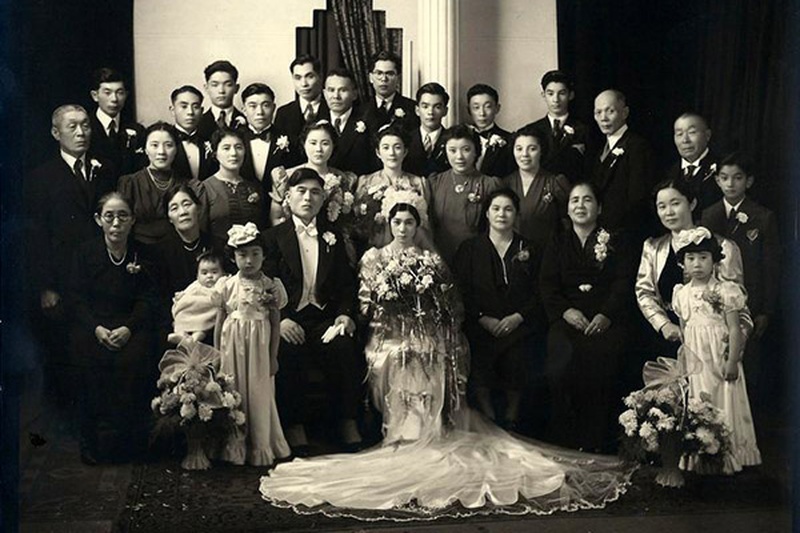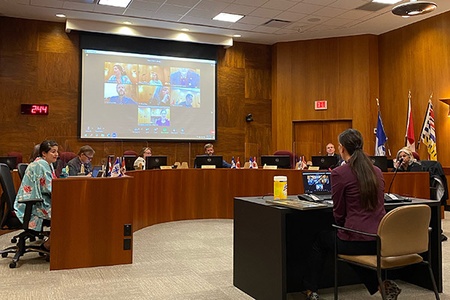In creating a children’s book about their grandmother’s life, cousins Lara Okihiro and Janis Bridger have uncovered their family’s prewar life in New Westminster, B.C. But while digging through archives, directories, photographs, documents, and family files, and with the help of their parents, aunts and uncles, second cousins, and their great uncle, Isi Nakazawa, the cousins also uncovered an incredible story of resilience and community from Japanese Canadians in New Westminster and their family’s part in that story.
Rediscovering a 40-year-old newspaper article written by their grandfather, they learned about how community members organized in an attempt to keep families together, avoid detention in Hastings Park, and prepare for their uncertain future in the chaotic months and weeks leading up to their forced removal in 1942.
These discoveries led to Okihiro and Bridger working with staff from the New Westminster Museum to craft an official proclamation honouring the history of Japanese Canadians in the city. Proclamations are ceremonial documents issued and signed by a city’s mayor to honour, celebrate, or create awareness about a significant issue. With New Westminster’s city council and residents in attendance, Mayor Jonathan Coté read that proclamation on May 9.
“May 2022 marks the 80th anniversary of which Japanese Canadians were forcefully removed from the City of New Westminster, had their belongings, homes, and businesses confiscated, and were incarcerated at internment and work camps,” read Mayor Coté. “The city of New Westminster endorsed the removal of Japanese Canadians, the institution of internment camps, the termination of Japanese employment in the City and restriction of their land or business ownership.”
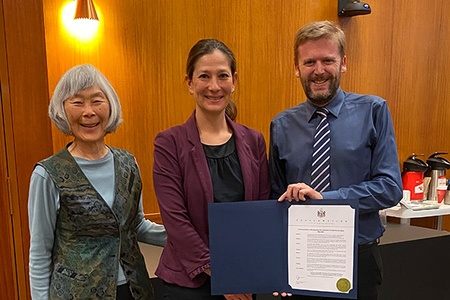
Shouganai
For Okihiro and Bridger, the dining room table in their grandparents’ Toronto home was where they heard bits and pieces of stories about prewar life and the internment. Growing up close to their grandmother, Hisa, they remember hearing stories of Sapperton, Marpole, Lulu Island, and years spent in Kaslo, but a lot of their grandfather Koichiro’s life remained a mystery. For Bridger, growing up on the West Coast, opportunities to ask her grandparents questions were even rarer.
“When I did visit Toronto, the dining room table became the place where tidbits of family history were told, but I never really understood, and I didn’t ask. It was not something readily talked about, and I regret not asking those questions,” Bridger tells Nikkei Voice in an interview.
The typical response from their grandparents and great aunt, Jeanne, Hisa’s sister who lived in Burnaby, to questions about the internment was a wave of the hand and the phrase, shouganai, “it can’t be helped.”
But when Hisa passed away three years ago, the cousins realized many questions were left unanswered, and they missed the opportunity to hear these stories firsthand. So, Bridger and Okihiro teamed up to explore their family’s roots. A cross-country venture, Okihiro is a writer and former lecturer at the University of Toronto, currently completing a book on dispossession, collecting, and hoarders in Japanese Canadian literature, and Bridger is a teacher-librarian in New Westminster.
“After our grandmother passed away, I think Janis and I felt more of the urgency to do something and put our history together,” Okihiro tells Nikkei Voice.
As the cousins explored archives and databases, they realized in their family there was anger, resistance, and moments of actively challenging the government, says Okihiro. Through Landscapes of Injustice family files, they found protest letters written by their great uncles and court proceedings from a great aunt, fighting to get back property stolen by the government.
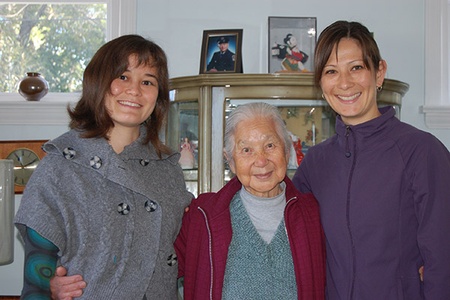
Detective Work
After discovering their grandparents’ wedding guestbook, inscribed with a New Westminster address, the two began working with staff from New Westminster Museum & Archives, meticulously digging through directories and censuses to map out their family’s lives in the city.
“It’s been detective work, and it’s kind of fun piecing together all of these things,” says Bridger.
Their research has led to uncanny revelations, like discovering Bridger’s children were born in the same hospital as Okihiro’s father, Richard, decades later. Richard was only five-weeks-old when he and Hisa boarded a train set for Kaslo on May 20, 1942. The cousins found many gaps in their grandfather’s history they needed to fill, as he passed away in 1998.
Okihiro remembers Koichiro often reading or working in his study. Separated by language and generational barriers, Okihiro remembers him making her Ichiban noodles for lunch on days off from school as a little girl and trying to teach her Japanese characters using calligraphy brushes.
But while digging through old family documents, the cousins found a treasure, a newspaper article by Koichiro in The Canada Times in 1983. The article recounts the work of a citizens’ group called the New Westminster and District Japanese Housewives Association, which formed in New Westminster in 1942.
The article includes the translation of a letter recounting the association’s work leading up to and shortly following the forced uprooting of the Japanese Canadians.
New Westminster and Disctrict Japanese Housewives Association
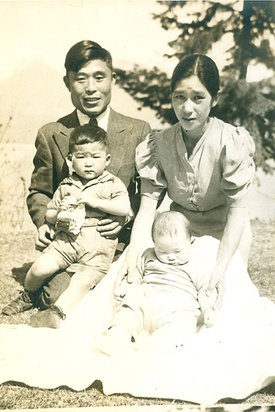
The letter was written by Koichiro, secretary of the association, and four other men who remained in New Westminster in the weeks following the forced uprooting. Addressed to the Japanese Canadian families from New Westminster—many then in Kaslo—Okihiro and Bridger don’t know if the letter ever reached its destination.
“With no assurance the letter would reach the addressees, as communication between Japanese people was fully controlled and censored by the B.C. Security Commission, nonetheless the writers ventured to mail the lengthy letter out before they themselves dispersed,” Koichiro recounts in the 1983 article. “I being one of the writers, have managed to keep a copy of that letter with me for the past 40 years. Now and again, I go over the letter, thinking of the people involved, the majority of whom have passed away in the intervening years. Reading it over each time, I can vividly hear their voices.”
The letter gives a rare and, at times, chilling firsthand account of their apprehension and fear in the moments after the forced uprooting, says Okihiro. The writers recount walking through the abandoned neighbourhoods where Japanese Canadians lived just weeks earlier, now feeling like ghost towns.
“I always find it striking that when you read the article, you’re thrown into this moment of uncertainty with the people who wrote this letter,” says Okihiro.
The New Westminster and District Japanese Housewives Association worked with community leaders to try to safeguard the Japanese Canadian community in New Westminster. The association formed as a response to reports that 21 Nisei men in New Westminster would soon be sent to road camps and families in Steveston to Hastings Park.
On March 28, 1942, an ad hoc committee of five women was elected to the association. According to the letter, men also took an active role in the association. They met with Austin Taylor, chairman of the B.C. Security Commission, with concerns like keeping families together, avoiding temporary detention at Hastings Park, and postponing departure for over-aged Issei. While Taylor made no assurances, he agreed the community did not need to be detained in Hastings Park and suggested Kaslo as the relocation site for residents.
“Concerning our lives in Kaslo, we had numerous occasions to negotiate with the Commission. The Commission gave us a guarantee that the lives of the Japanese were secure; that was the only guarantee we got,” reports the letter. “We can say from our experience that we Japanese as a group should act collectively rather than individually, or we will collapse,” the writers add.
Okihiro and Bridger found Koichiro’s work with the association aligned with the person they knew him to be in his later life, an active member of the Japanese Canadian community in Toronto. During the redress movement, he was part of the Toronto JCCA Redress Committee and even travelled to meetings in Winnipeg.
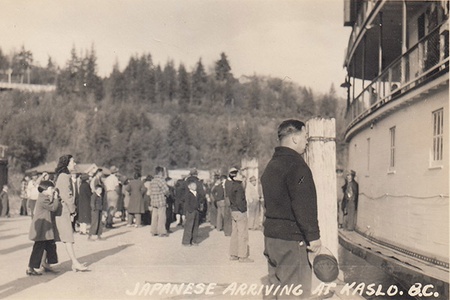
Uncovering New Mysteries
While their research has answered many questions, Okihiro and Bridger have discovered new mysteries and more questions. They wonder why their grandfather and the other four men were left in New Westminster to write the letter. Koichiro had suffered an accident at the sawmill where he worked, losing an eye, possibly making him unable to work at a road camp.
Another reason may have been because Koichiro was an American citizen at the time. Born in the U.S., Koichiro was sent to live with his uncle in Hiroshima, Japan, where he attended elementary school and worked before immigrating to Canada. Denied Canadian citizenship before the war, he still was an American citizen, which may have left him in a jurisdictional grey area with the Canadian government unsure of what to do with him, explains Okihiro. In mid-June, Koichiro was interned in Kaslo with Hisa.
Other mysteries Okihiro and Bridger are looking to the Japanese Canadian community to help solve. As Koichiro writes in the article, the New Westminster and District Japanese Housewives Association included a committee of five elected women. But throughout the letter, there is no mention of who those women were.
“Something that struck both of us in the letter was the absence of women. After all, this article is about the housewives’ association, but we don’t get any of the women’s names, and we don’t really know too much about them,” says Okihiro. “This is all we have. When we searched the New Westminster and District Japanese Housewives Association, we haven’t found any else. I think that had our family not kept the article, it’s a piece of history that would have been lost,” adds Bridger.
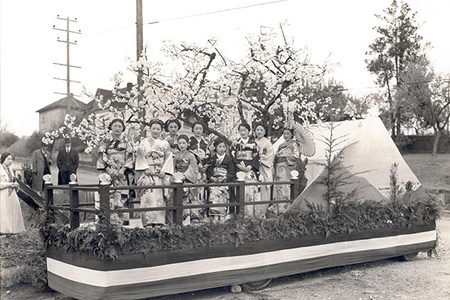
Okihiro and Bridger also hope to learn more about Reverend McWilliam, minister of New Westminster’s Japanese United Church. Reverend McWilliam lived in Japan for 26 years, could speak Japanese, and was disturbed by the treatment of Japanese Canadians. He worked with Reverend Ikuta of the Buddhist Church to help the community where he could.
“He told the Committee that he had to try to help because all the Japanese were suffering from this unfortunate evacuation process. We greatly appreciated his generous offer,” the letter recounts. “At the time, Rev. McWilliam offered to go to Kaslo to see what the town was like. He would report when he returned. Furthermore, the kind Rev. McWilliam told us he could go anywhere and was free from curfew, so to ask him to do whatever he could for the Japanese.”
McWilliam also worked as a liaison to inform families in Strawberry Hill, Surrey, Kennedy, Sunberry, Cloverdale, and White Rock, that had lost contact with the Japanese Canadian community due to distance and isolation. McWilliam visited Kaslo before families were sent over, and was able to inform the community of what to expect and the state of disrepair of the homes, says Bridger. The association got permission from the B.C. Security Commission to send five men to repair the homes before families started to arrive.
“To give the people in New Westminster a heads up about what to expect was an advantage many Japanese Canadians didn’t have,” says Bridger. “It was nice to know that there were people who supported them outside the Japanese Canadian community.”
Okihiro and Bridger are looking for anyone whose family lived in New Westminster before the war or was interned in Kaslo. They are looking for information about the New Westminster and District Japanese Housewives Association, Reverend McWilliam, and Reverend Ikuta. The cousins also want to know if the letter ever reached New Westminster families in Kaslo and if anyone has a copy of that original letter.
Although 80 years later, researching and understanding these histories is important work, says Okihiro. Connections can be made between the treatment of Japanese Canadians to that of Chinese Canadians with the head tax, Black Canadians of Africville in Halifax, and Indigenous Peoples across Canada.
“What’s important about these stories and these histories is that they remind us that if we have a really nice picture of Canada, we should challenge that because maybe it was never that way and maybe it still isn’t,” says Okihiro. “These stories remind us that there’s always work to do, to learn about the past and to make things better for the present and the future. And though it’s hard work, it’s also beautiful work, bringing people together, breathing life into the past, and sparking hope and resolution in others.”
Too often, history is taught from a dominant settler perspective, but there are so many other perspectives of history, says Bridger. As a society, we cannot take back these racist and hurtful pasts, but we have inherited the responsibility to share these histories, so we can move forward and not repeat these mistakes. These are lessons Bridger teaches to her students.
“It’s very timely that we share different perspectives of history and recognize that one history isn’t dominant. For me, this is important because I teach 5 to 10-year-olds, and I want them to understand that all of our histories are important and there shouldn’t be dominant ones,” says Bridger. “The way I teach my little guys is that everybody makes mistakes, and it’s hard to apologize and talk about these mistakes, but they need to be talked about. It’s a promise not to let these things happen again.”
* * * * *
If you have any information about the Japanese Canadian community in New Westminster, internment in Kaslo, the New Westminster and District Japanese Housewives Association, Reverend McWilliam, or Reverend Ikuta, Lara Okihiro, and Janis Bridger would love to hear from you. They are also looking for a copy of the letter Voices from the Past written by Japanese Canadians from New Westminster to Kaslo.
Please contact them a lara.okihiro@mail.utoronto.ca and jbridger@ualberta.ca.
*This article was orginally published in the Nikkei Voice on Aug 24, 2022.
© 2022 Kelly Fleck/Nikkei Voice


